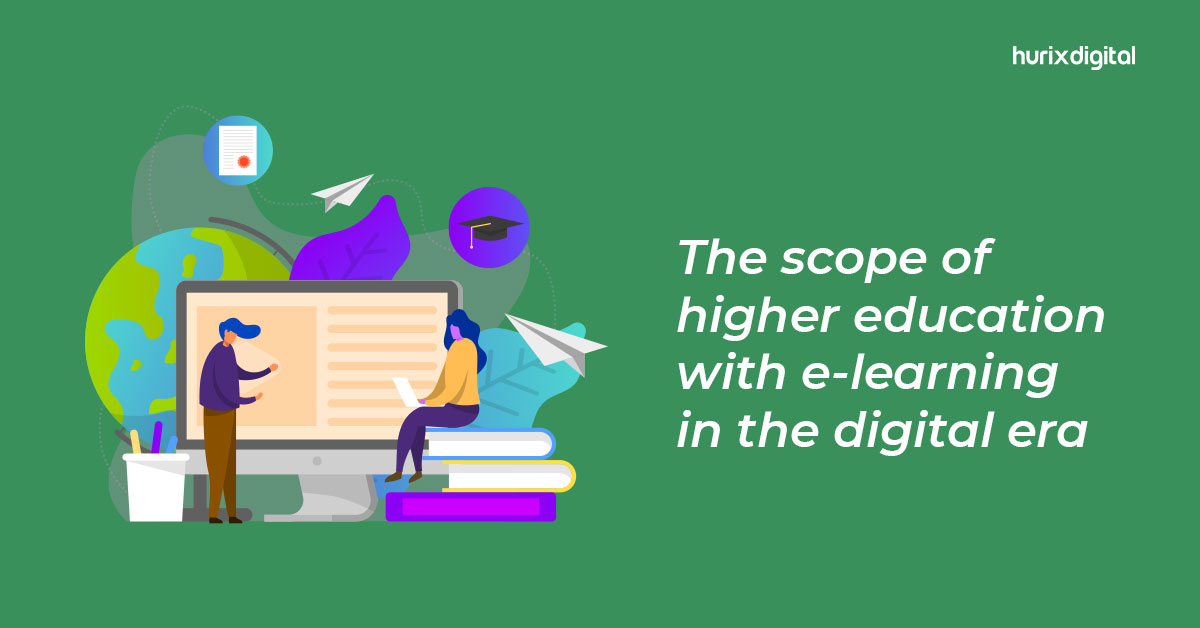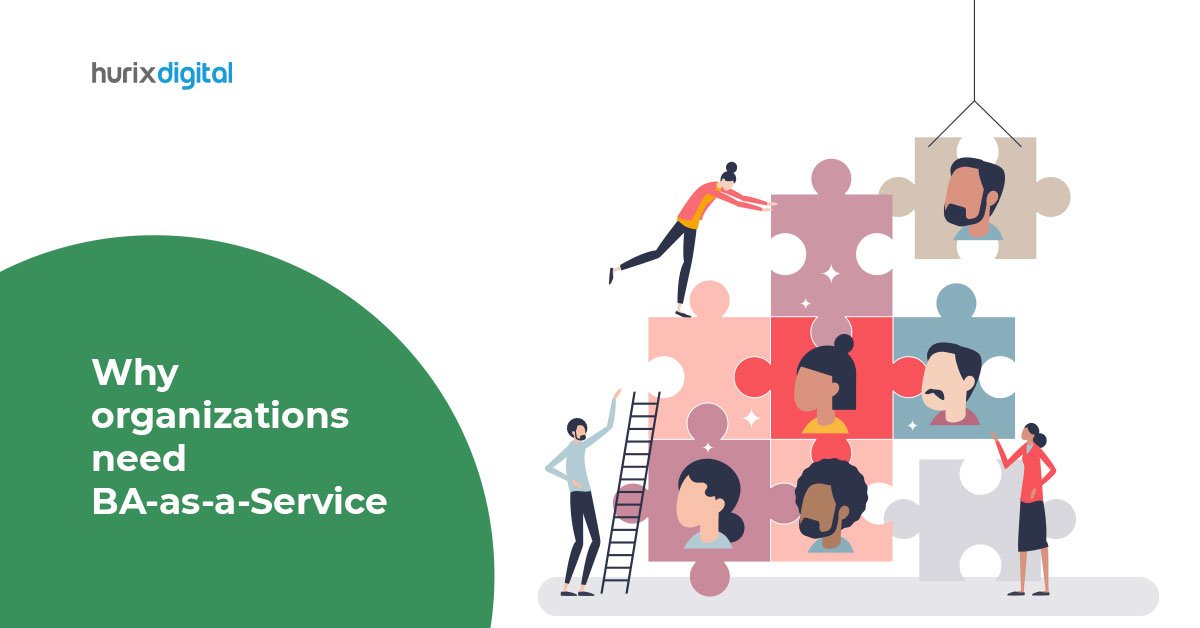
The Scope of Higher Education with e-Learning in the Digital Era
Summary
This article explores the expanding role of e-learning in higher education, highlighting how digital tools and platforms are transforming traditional educational models and offering new opportunities for student engagement.
E-learning in higher education has become increasingly popular as technology has advanced, and online learning platforms have become more sophisticated and user-friendly.
With the ability to access educational resources from anywhere at any time, more and more students are opting for e-learning as a convenient and flexible way to pursue higher education.
In this article, we will explore the scope, latest trends, and solutions in e-learning for higher education, including the growth of e-learning, the role of online learning platforms for higher education, the benefits of e-learning, and the challenges and solutions that need to be addressed.
We will also examine the future of e-learning in higher education as technology continues to evolve and new advancements are made.
Table of Contents:
- The Growth of E-Learning in Higher Education
- The Impact of Higher Education Solutions
- The Benefits of E-Learning in Higher Education
- Challenges and Solutions
- The Future of e-Learning in Higher Education
The Growth of E-Learning in Higher Education
The growth of e-learning in higher education has been significant in recent years. According to a report by Forbes, the e-learning market for higher education is expected to grow by 9.5% annually, reaching a market size of $325 billion by 2025.
The increasing demand for flexible and convenient learning options and the growing adoption of e-learning by universities and colleges worldwide drive this growth.
With the ability to access educational resources from anywhere at any time, e-learning is becoming an increasingly attractive option for students looking to pursue higher education.
Additionally, e-learning is becoming more affordable, as the cost of online programs is often lower than the cost of traditional on-campus programs.
The growth of e-learning in higher education is also supported by the increasing availability of online learning platforms, making it easier for students to access educational resources.
The Impact of Higher Education Solutions
Higher education solutions that leverage e-learning is becoming more prevalent and have a significant impact on the education landscape.
These solutions include virtual and augmented reality, gamification, and adaptive learning, which enhance the learning experience by making it more interactive and personalized.
Virtual and augmented reality technology can make the learning experience more immersive and engaging, while gamification can make it more interactive and fun.
Adaptive learning, on the other hand, can personalize the learning experience based on a student’s individual needs and abilities, leading to better engagement and knowledge retention.
Furthermore, these solutions can improve the effectiveness and efficiency of the educational process. For example, adaptive learning can help students identify areas where they need more support and provide targeted instruction, reducing the need for remediation.
Additionally, virtual and augmented reality can provide hands-on, experiential learning opportunities that can be difficult to replicate in a traditional classroom setting. These solutions can also be integrated with online learning platforms, making them even more accessible for students.
These higher education solutions are expected to evolve and improve as technology advances.
The Benefits of E-Learning in Higher Education
E-learning in higher education provides several benefits for students, including flexibility, convenience, and access to a wider range of resources and instructors:
- Flexibility is one of the main benefits of e-learning in higher education. With e-learning, students can access educational resources from anywhere at any time, allowing them to balance their education with work or family commitments. This flexibility is particularly beneficial for working professionals, parents, or students living in remote areas who may not be able to attend traditional on-campus classes.
- E-learning also offers convenience, as students do not have to commute to a physical location to attend classes, which can save time and money. Additionally, e-learning often costs less than traditional on-campus programs, making it more accessible to a wider range of students.
- E-learning provides students access to a wider range of educational resources and instructors. With e-learning, students can access a variety of course offerings and gain diverse perspectives. This is particularly beneficial for students interested in studying a specific topic or field but who do not have access to it at their local college or university.
Challenges and Solutions
Despite the clear benefits of e-learning in higher education, there are also some challenges that need to be addressed. Below are some of the main challenges:
- Ensuring the Quality of Online Education: This includes ensuring students have access to the same resources and opportunities as those enrolled in traditional courses.
- Limited Interaction and Socialization: Online education may provide limited opportunities for interaction and socialization compared to traditional on-campus education.
- Technical Issues: Technical issues such as internet connectivity and computer problems can disrupt the learning process.
To combat these challenges, several solutions can be implemented:
- Providing Support Systems: Universities and colleges can invest in support systems such as online tutoring, counseling, and academic advising to help students succeed in their online education.
- Incorporating Interactive and Collaborative Features: Online learning platforms can incorporate interactive and collaborative features such as discussion boards, group projects, and virtual office hours to provide opportunities for interaction and socialization.
- Providing Technical Support: Universities and colleges can provide students with technical support to help them troubleshoot any technical issues that may arise.
- Incorporating Engagement Strategies: Universities and colleges can incorporate engagement strategies such as gamification, adaptive learning, and personalized instruction to ensure student engagement and retention.
The Future of e-Learning in Higher Education
The future of e-learning in higher education looks promising as technology continues to evolve and new advancements are made. Some of the key trends that are expected to shape the future of e-learning include:
- Artificial Intelligence and Machine Learning: AI and machine learning are expected to play a bigger role in e-learning, allowing for more personalized and adaptive learning experiences.
- Virtual and Augmented Reality: VR and AR are expected to become more prevalent in e-learning, providing students with more immersive and engaging learning experiences.
- Mobile Learning: With the increasing use of mobile devices, mobile learning is expected to become more prevalent, making e-learning more accessible for students on the go.
- Blended and Hybrid Learning: Blended and hybrid learning, which combine online and on-campus education, are expected to become more popular, providing students with the best of both worlds.
- Microlearning: Microlearning, focused on small, targeted lessons, is expected to become more prevalent in e-learning as it allows students to learn in short, manageable chunks.
Overall, e-learning in higher education will continue to evolve and improve as technology advances. Therefore, universities and colleges must stay abreast of these trends and invest in the necessary technology and resources to provide students with the best e-learning experience.
Conclusion
E-learning in higher education has the potential to revolutionize the way we learn. With the increasing demand for flexible and convenient learning options and the growing adoption of e-learning by universities and colleges worldwide, it is clear that e-learning is the future of learning in the digital era.
If you are interested in exploring e-learning options, check out our advantages of e-learning post to learn more about our solutions and find the right fit for your needs.
Additionally, you can check out our other blogs on e-learning trends for the future, the best e-learning authoring tools, and strategies for student engagement in online learning to learn more about e-learning in higher education and related topics.
At Hurix, we are committed to providing cutting-edge e-learning solutions that enhance the learning experience and drive business results. Learn more about how we can help; get in touch with us.

Performance, Results, Growth, and Life-Long Learning define my professional life. I am passionate about making workplace learning planful, purposeful, and impactful. I take pride in partnering with clients and bringing them the best in learning design and creating solutions that address business challenges.







